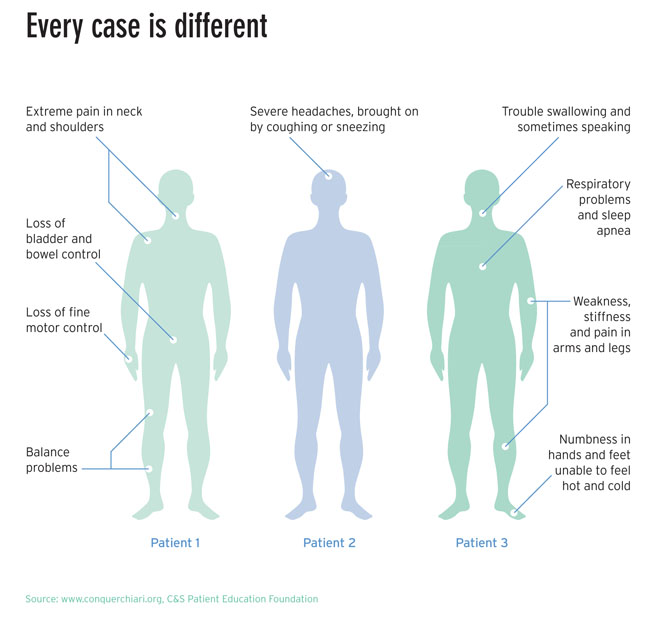
Definition
Chiari malformation (also known as Arnold-Chiari malformation, tonsillar herniation, tonsillar ectopia, or hindbrain herniation) is a congenital condition in which the posterior fossa, or lower part of the skull, is too small to accommodate the lower part of the brain, causing part of the cerebellum to protrude into and crowd the spinal column.
The resulting compression of the brain stem and spinal cord is the main reason for most of the symptoms that are associated with Chiari malformation. Even a minimal amount of protrusion – as little as one millimeter – can result in enough compression to cause symptoms.

Chiari Type I malformation: The lower part of the cerebellum extends into the foramen magnum. This type of Chiari malformation is present at birth but may not be recognized at the time. It is the only type of Chiari malformation that presents in adulthood.
Chiari Type II malformation: Both the cerebellum and brain stem tissue extend into the foramen magnum in this type of Chiari malformation. Type II is invariably associated with myelomeningocele, a severe form of spina bifida.
Chiari Type III malformation: In this type of Chiari malformation, which is both rare and serious, the hind part of the brain protrudes through a defect in the skull. Like Type II, it is apparent at birth.
Chiari Type 0 malformation: This is the same as a Chiari Type I malformation, except that the cerebellum does not extend into the foramen magnum by the standard five millimeters.
Patients with Chiari Type 0 malformation are often misdiagnosed because current diagnostic criteria do not accurately reflect the neurological condition underlying the malformation.




